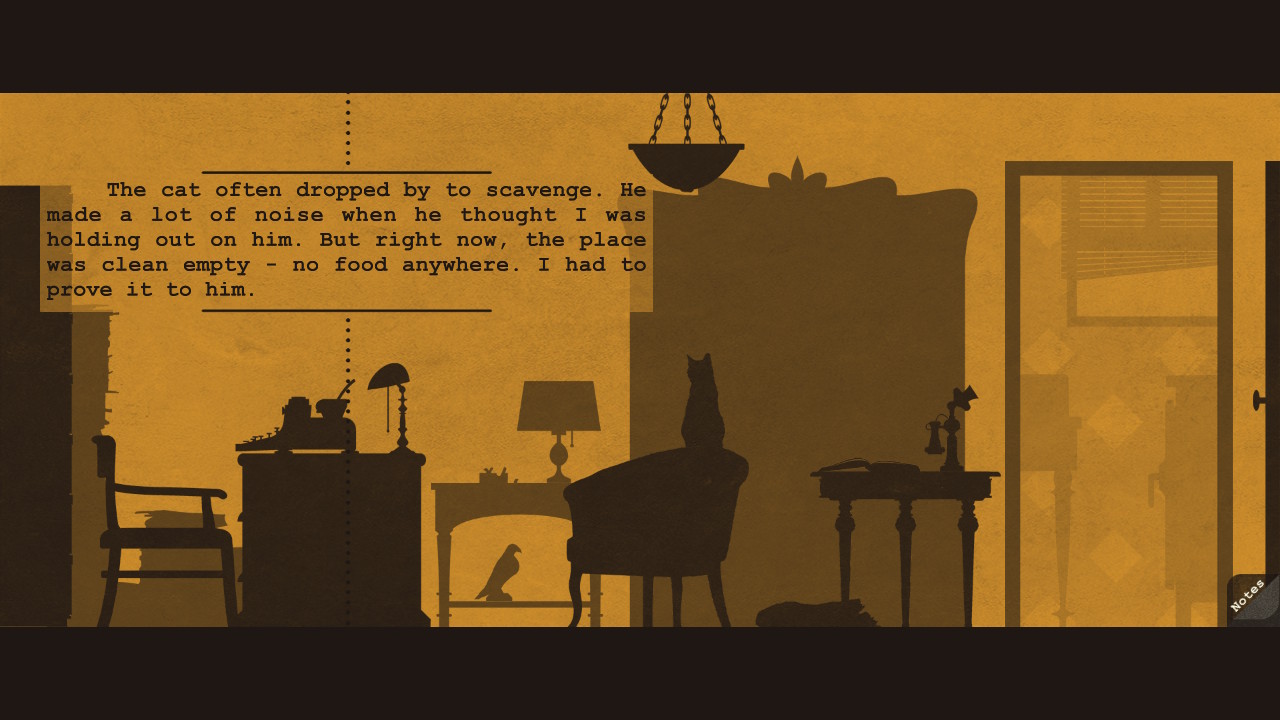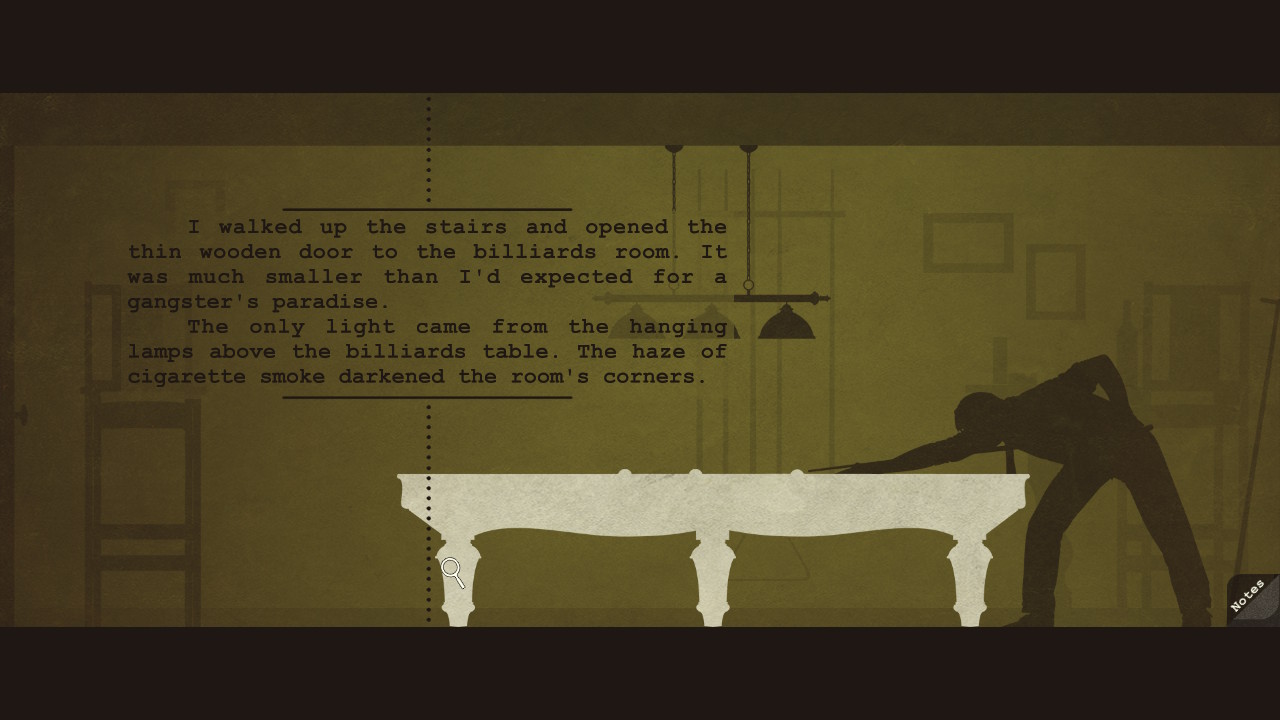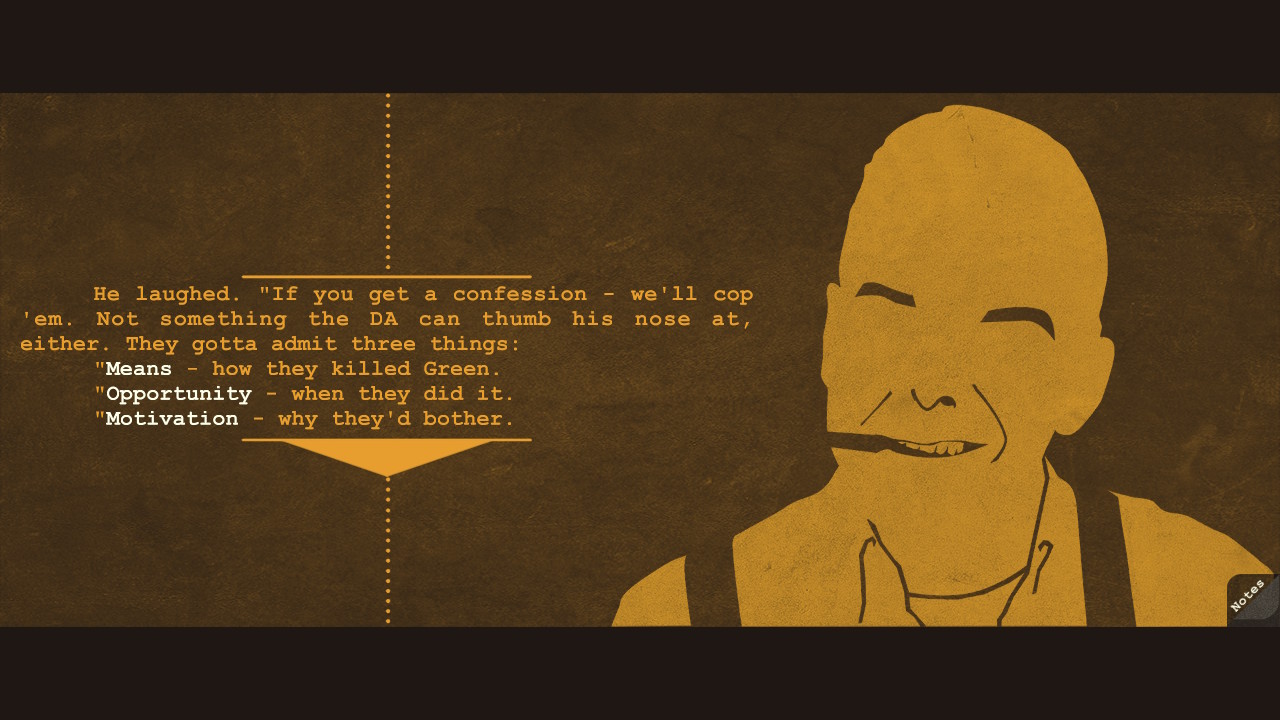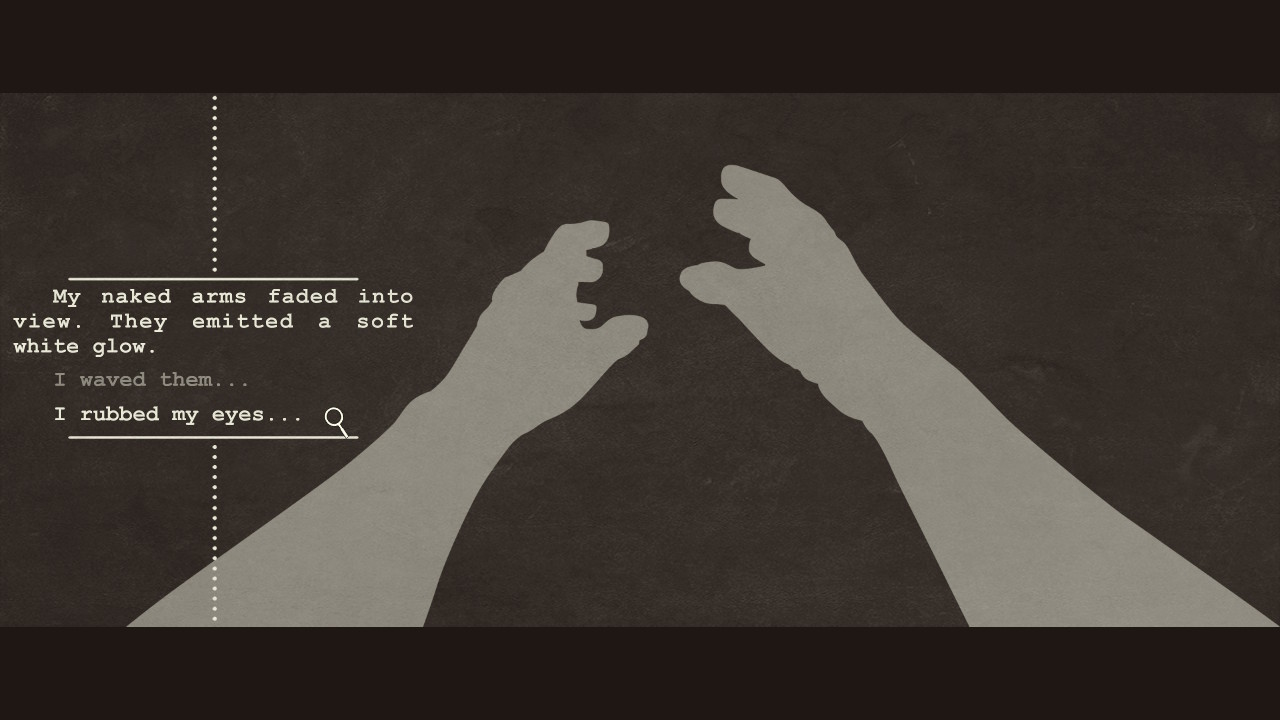A Case of Distrust Nintendo Switch Review
Moody noir atmosphere kneecapped by unfulfilling mystery.

In the swing of 1920s San Francisco, private eye Phyllis Cadence Malone is at a loose end. Her career seems dead in the water and she lacks food to sustain herself or the stray cat begging for her attention. She’s desperate for a case, and when a smarmy local bootlegger invites himself into her apartment, that’s exactly what she gets. But does Miss Malone’s big break do enough to draw you in to the prohibition noir detective world? Yes, but with more than a few caveats.
Presented as a mix between interactive crime novel and detective adventure game, A Case of Distrust does a perfect job of making you feel like a 20s pulp-fiction private eye. The presentation has it all: elegant Courier typeface, monologues filled with cynical similes, metaphors and wry observations, snappy dialogue and characters which jump out at you. On the face of things there’s a whole lot to like.
The detective work itself also feels clever for the first hour or so. Areas of investigation are presented with a backdrop styled in stark colours and silhouettes, and you highlight different assets to investigate further. Some will just give you some flavour text to fill out he world and Malone’s own thought patterns, but others will sync as evidence or pertinent notes that go right into your journal.

As a detective, it’s your job to keep a handle on all this info, and use it to your advantage when questioning leads and suspects. You meet a few colourful characters, each with their own secrets and motivations. Everyone plays their cards tight to their chest.
All of these characters are pretty standardised archetypes. You’ll run into a few rough, smart aleck gangster types, their lovers, and other generically suspicious figures – stuff you’d expect from a pulp noir crime story. The characters themselves aren’t that deep but are all written well, fulfilling their roles perfectly to give Malone enough on her plate to keep her guessing.
You’ll go from suspect to suspect – each one encased in their own separate settings – and ask questions to get to the bottom of a case where everyone is a person of interest.

Your main aim to find contradictions to catch-out lying suspects. And while this is fronted as the principal route to success, you only need to carry out a handful of contradictions in the entire game. Most of these are easy to notice, and only one had me stuck for any significant amount of time.
After about one and a half hours, when you’re settled into the bulk of the investigation, A Case of Distrust unfortunately falls into that familiar pattern: ask everyone about everything. It becomes less intuition-driven hunches, and more busy work as you hop from cab to cab. Speaking of cabs, Malone sure has a high taxi budget for someone who can’t afford a day’s breakfast.
Cabbies also offer optional conversations, and I found myself role playing these. If I felt stuck without any leads, I’d refuse to talk to a cabby because I felt frustrated; if it was going well, I’d indulge them with a chat. These talks fill out a lot of the world and context, filled with historical references and a touch of social commentary – but not too much. I’d recommend talking at every opportunity. These conversations also let you build the character of Malone a little more, with dialogue choices to decide her political and social leanings.

In a way, when the writing is at it’s best, that’s when A Case of Distrust can feel most disappointing. The case itself doesn’t live up to the noir detective genre or its impressive writing chops. Once I felt like I had enough to accuse someone, I thought that the whole case was about to blow wide open. Instead, it just ended, with one predictable twist to set up the ending. I clocked in two and a half hours and felt like it would need another couple on top of that to live up to its own premise.
That’s not to say I didn’t enjoy my time with it – I took away a lot of positives. The art style is sharp and looks gorgeous on the Switch screen, and the detective work for the first half feels like you’re actually pulling your own weight, not relying on the game to hold your hand.
But too much falls through the cracks for me. While the writing and dialogue is tonally perfect, there are a few issues at play on a broader scale. A few characters are introduced and then forgotten about, and the main emotional drive for Malone – her dead cop uncle Lewis, the man who helped give Malone her start on the force – seems to disappear from her mind for the entire mid game. She mentions him at every turn early on, then not again until the very end.

Malone’s commentary on her role as a rare female detective, battling against the expectations of male colleagues and, of course, the gangsters, starts off like it could have something to say. But again, this is dropped once you’re focused on booking it between interrogations.
Controlling things on the Switch doesn’t feel too great either. Handheld mode looks terrific, but dragging the cursor from one side of the screen to the other is painfully slow. There is touch screen functionality, and this is snappy for when you want to access your notes, but in other instances it’s too clunky. I often found myself tapping something to get the cursor in place, then tapping A to select it, then having to move the cursor away again for the button press to register. After a while I stopped using the screen and confined myself to the slow crawl of the analogue stick.
I love the aesthetic, potential, ambition and atmosphere of A Case of Distrust. Hopefully, the heavily-hinted-at sequel will expand things much further – and perhaps lead to an ongoing series in the future – but for now, I’ll dip back into a Dashiell Hammett or Raymond Chandler novel to scratch the pulp noir crime itch.

